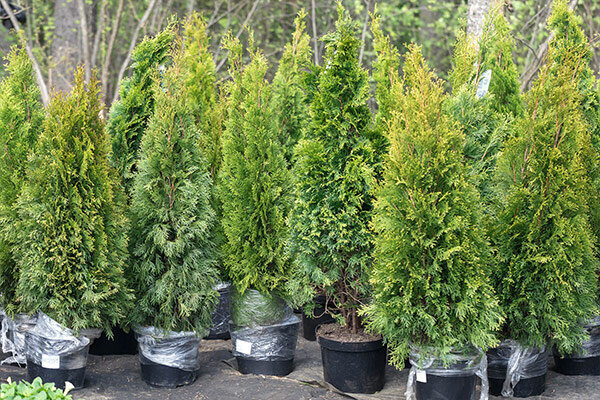Tree Planting FAQs
Planting a tree can be the start of a rewarding relationship. No matter what you do in your yard from here on out, the tree is part of your life’s landscape. However, many people don’t really know a lot about planting trees or keeping them alive throughout the developmental stages of their lives. Here are a few tips to help you begin:
4. When is the best time to plant a tree?
- Depends on the tree
- Could depend on your soil condition
- Make sure to pay attention to precipitation
Trees can be planted during pretty much any season, depending on the tree. The most common ones are spring, summer, and fall – meaning most can’t be planted in the winter months. It is imperative that any trees you plant are watered regularly for at least the first year after they have been planted, if not longer. You may even have to water at a regular rate for a few years after your trees have been planted, depending on how much precipitation you tend to get. It will also depend on how big the root system is and if the trees can store water for themselves. If you are looking for irrigation tips, you may want to use watering bags or drip irrigation.
Popular Mechanics suggests that you may want to pay attention to your soil quality, which is impacted by the time of the year. Depending on things like runoff, what else you’ve been doing in your yard, and even how much rain you’ve gotten so far.
3. What’s the best way to bring my tree home?
- Make sure to secure tree
- Buy a quality tree
- Ask professional help to transport larger trees
Moving your tree home can be a tedious experience, but it doesn’t have to be. When buying a tree, make sure to go to a high quality nursery that will package your tree for transport. They should be able to help you move it into your home. At the very least, it should be packaged properly. If you don’t have too far to go, you can easily use a car to transport most small trees. However, you may want to use a truck if you have access to one. Remember that trees are living things and can have some pests or dirt on them.
According to Melinda Myers, “Once you arrive home, ask for help removing the tree from your vehicle. Use a board to create a ramp and slide the tree out of the truck, preferably next to the planting hole. Or carefully lift and place the tree in a wheelbarrow and drive it over to the planting location.”
2. Should I be staking my new tree?
- In some cases, yes
- In other cases, no
- Make sure to talk to a professional
Staking trees seems to be a popular option, but it isn’t often the best one for most gardeners, according to Fine Gardening. Staking can be extremely beneficial to a young tree, but you have to be careful that you don’t let the stake remain for too long or the tree can come to rely on it.
If you don’t stake your tree, the trunk will be stronger and thicker at the bottom and lean out towards the top, just like it should be. It will also have stronger roots. However, it may take a bit longer to grow.
The problem is that most people don’t know how to stake a tree properly. They either stake it too tight, which can lead to girdling and weakening of the tree, or they stake it too loosely, which doesn’t do much more than rub the bark. Neither of these options is good and can impede the growth of a young tree and significantly shorten its life.
1. How far apart should I plant my trees from each other?
- It really depends on the type of tree
- Can also be impacted by where in your yard you plant
- You have to look out for hardscaping and structures as well
When you plant trees, you often think that you are giving yourself enough space because you are just looking at the smaller version. It is almost impossible to imagine that the trees will become that big – but that is exactly what you need to do. Do some research and figure out how big the canopy of the tree will get and then take your measuring tape out into the yard.
According to the University of Florida, “Trees are often spaced apart according to their mature canopy spread. Tree spacings of 50 to 60 feet are common place. This allows the open growth form of the tree to develop. There are also nice examples of trees in urban and suburban landscapes spaced much closer.”
You also want to think about the fact that canopies that overlap will make quite a bit of shade and trees (and anything under them) do need some sunlight to stay healthy.
If you believe that you have a problem with your trees or in your yard, give us a call today at (269) 216-6811 and we can set up a time to visit you and your beautiful trees to see just what the problem is – and how we can help you. There is no job too big or too small – contact our professionals today!


